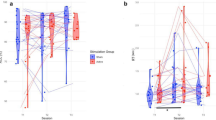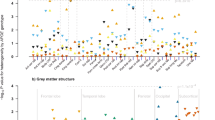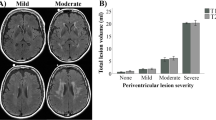Abstract
Motivation is important for learning and cognition. Although dopaminergic (D2) transmission in the ventral striatum (VS) is associated with motivation, learning, and cognition are more strongly associated with function of the dorsal striatum, including activation in the caudate nucleus. A recent study found an interaction between intrinsic motivation and the DRD2/ANKK1 polymorphism (rs1800497), suggesting that A-carriers of rs1800497 are significantly more sensitive to motivation in order to improve during working memory (WM) training. Using data from the two large-scale imaging genetic data sets, IMAGEN (n=1080, age 13–15 years) and BrainChild (n∼300, age 6–27), we investigated whether rs1800497 is associated with WM. In the IMAGEN data set, we tested whether VS/caudate activation during reward anticipation was associated with WM performance and whether rs1800497 and VS/caudate activation interact to affect WM performance. We found that rs1800497 was associated with WM performance in IMAGEN and BrainChild. Higher VS and caudate activation during reward processing were significantly associated with higher WM performance (p<0.0001). An interaction was found between the DRD2/ANKK1 polymorphism rs1800497 and VS activation during reward anticipation on WM (p<0.01), such that carriers of the minor allele (A) showed a significant correlation between VS activation and WM, whereas the GG-homozygotes did not, suggesting that the effect of VS BOLD on WM is modified by inter-individual genetic differences related to D2 dopaminergic transmission.
Similar content being viewed by others
Log in or create a free account to read this content
Gain free access to this article, as well as selected content from this journal and more on nature.com
or
References
Aalto S, Bruck A, Laine M, Nagren K, Rinne JO (2005). Frontal and temporal dopamine release during working memory and attention tasks in healthy humans: a positron emission tomography study using the high-affinity dopamine D2 receptor ligand [11C]FLB 457. J Neurosci 25: 2471–2477.
Backman L, Nyberg L, Soveri A, Johansson J, Andersson M, Dahlin E et al (2011). Effects of working-memory training on striatal dopamine release. Science 333: 718.
Beck SM, Locke HS, Savine AC, Jimura K, Braver TS (2010). Primary and secondary rewards differentially modulate neural activity dynamics during working memory. Plos One 5: e9251.
Blum K, Cull JG, Braverman ER, Comings DE (1996). Reward deficiency syndrome. American Scientist 84: 132–145.
Camara E, Kramer UM, Cunillera T, Marco-Pallares J, Cucurell D, Nager W et al (2010). The effects of COMT (Val108/158Met) and DRD4 (SNP −521) dopamine genotypes on brain activations related to valence and magnitude of rewards. Cereb Cortex 20: 1985–1996.
Chatham CH, Badre D (2013). Working memory management and predicted utility. Front Behav Neurosci 7: 83.
Comings DE, Blum K (2000). Reward deficiency syndrome: genetic aspects of behavioral disorders. Prog Brain Res 126: 325–341.
Darki F, Klingberg T (2014). The role of fronto-parietal and fronto-striatal networks in the development of working memory: a longitudinal study. Cereb Cortex doi:10.1093/cercor/bht352.
Diekhof EK, Kaps L, Falkai P, Gruber O (2012). The role of the human ventral striatum and the medial orbitofrontal cortex in the representation of reward magnitude—an activation likelihood estimation meta-analysis of neuroimaging studies of passive reward expectancy and outcome processing. Neuropsychologia 50: 1252–1266.
Dumontheil I, Klingberg T (2012). Brain activity during a visuospatial working memory task predicts arithmetical performance 2 years later. Cereb Cortex 22: 1078–1085.
Dumontheil I, Roggeman C, Ziermans T, Peyrard-Janvid M, Matsson H, Kere J et al (2011). Influence of the COMT genotype on working memory and brain activity changes during development. Biol Psychiatry 70: 222–229.
Durston S, Thomas KM, Yang Y, Uluğ AM, Zimmerman RD, Casey BJ (2002). A neural basis for the development of inhibitory control. Dev Sci 5: F9–F16.
Fritsch V, Varoquaux G, Poline JB, Thirion B (2012). Non-parametric density modeling and outlier-detection in medical imaging datasets. In Wang F, (Ed.) Machine learning in medical imaging. Springer-Verlag: Berlin Heidelberg, Vol 7588 pp 210–217.
Hirvonen M, Laakso A, Nagren K, Rinne JO, Pohjalainen T, Hietala J (2004). C957T polymorphism of the dopamine D2 receptor (DRD2) gene affects striatal DRD2 availability in vivo. Mol Psychiatry 9: 1060–1061.
Jonsson EG, Nothen MM, Grunhage F, Farde L, Nakashima Y, Propping P et al (1999). Polymorphisms in the dopamine D2 receptor gene and their relationships to striatal dopamine receptor density of healthy volunteers. Mol Psychiatry 4: 290–296.
Knutson B, Adams CM, Fong GW, Hommer D (2001a). Anticipation of increasing monetary reward selectively recruits nucleus accumbens. J Neurosci 21: RC159.
Knutson B, Fong GW, Adams CM, Varner JL, Hommer D (2001b). Dissociation of reward anticipation and outcome with event-related fMRI. Neuroreport 12: 3683–3687.
Loth E, Poline JB, Thyreau B, Jia T, Tao C, Lourdusamy A et al (2013). Oxytocin Receptor genotype modulates ventral striatal activity to social cues and response to stressful life events. Biol Psychiatry doi:10.1016/j.biopsych.2013.07.043.
Luking KR, Barch DM (2013). Candy and the brain: neural response to candy gains and losses. Cogn Affect Behav Neurosci 13: 437–451.
Mcnab F, Klingberg T (2008). Prefrontal cortex and basal ganglia control access to working memory. Nat Neurosci 11: 103–107.
McNab F, Varrone A, Farde L, Jucaite A, Bystritsky P, Forssberg H et al (2009). Changes in cortical dopamine D1 receptor binding associated with cognitive training. Science 323: 800–802.
Murayama K, Matsumoto M, Izuma K, Matsumoto K (2010). Neural basis of the undermining effect of monetary reward on intrinsic motivation. Proc Natl Acad Sci USA 107: 20911–20916.
Nees F, Tzschoppe J, Patrick CJ, Vollstadt-Klein S, Steiner S, Poustka L et al (2012). Determinants of early alcohol use in healthy adolescents: the differential contribution of neuroimaging and psychological factors. Neuropsychopharmacology 37: 986–995.
Neville MJ, Johnstone EC, Walton RT (2004). Identification and characterization of ANKK1: a novel kinase gene closely linked to DRD2 on chromosome band 11q23.1. Hum Mutat 23: 540–545.
Nymberg C, Jia T, Lubbe S, Ruggeri B, Desrivieres S, Barker G et al (2013a). Neural mechanisms of attention-deficit/hyperactivity disorder symptoms are stratified by MAOA genotype. Biol Psychiatry 74: 607–614.
Nymberg C, Jia T, Ruggeri B, Schumann G (2013b). Analytical strategies for large imaging genetic datasets: experiences from the IMAGEN study. Ann N Y Acad Sci 1282: 92–106.
O'Doherty J, Dayan P, Schultz J, Deichmann R, Friston K, Dolan RJ (2004). Dissociable roles of ventral and dorsal striatum in instrumental conditioning. Science 304: 452–454.
Pochon JB, Levy R, Fossati P, Lehericy S, Poline JB, Pillon B et al (2002). The neural system that bridges reward and cognition in humans: An fMRI study. Proc Natl Acad Sci USA 99: 5669–5674.
Postle BR, D'Esposito M (1999). Dissociation of human caudate nucleus activity in spatial and nonspatial working memory: an event-related fMRI study. Cognitive Brain Res 8: 107–115.
Raven J, Raven JC, Court JH (1998) Manual for Raven's progressive matrices and vocabulary scales. Oxford Psychologists Press: Oxford.
Satterthwaite TD, Loughead J, Ruparell K, Elliott MA, Gerraty RT, Calkins ME et al (2012). Being right is its own reward: load and performance related ventral striatum activation to correct responses during a working memory task in youth. Biol Psychiatry 71: 184s–184s.
Schneider S, Peters J, Bromberg U, Brassen S, Miedl SF, Banaschewski T et al (2012). Risk taking and the adolescent reward system: a potential common link to substance abuse. Am J Psychiatry 169: 39–46.
Schott BH, Minuzzi L, Krebs RM, Elmenhorst D, Lang M, Winz OH et al (2008). Mesolimbic functional magnetic resonance imaging activations during reward anticipation correlate with reward-related ventral striatal dopamine release. J Neurosci 28: 14311–14319.
Schultz W, Dayan P, Montague PR (1997). A neural substrate of prediction and reward. Science 275: 1593–1599.
Schumann G, Loth E, Banaschewski T, Barbot A, Barker G, Buchel C et al (2010). The IMAGEN study: reinforcement-related behaviour in normal brain function and psychopathology. Mol Psychiatry 15: 1128–1139.
Söderqvist S, Matsson H, Peyrard-Janvid M, Kere J, Klingberg T (2013). Polymorphisms in the dopamine receptor 2 gene region influence improvements during working memory training in children and adolescents. J Cogn Neurosci 26: 54–62.
Taylor SF, Welsh RC, Wager TD, Phan KL, Fitzgerald KD, Gehring WJ (2004). A functional neuroimaging study of motivation and executive function. Neuroimage 21: 1045–1054.
Trifilieff P, Feng B, Urizar E, Winiger V, Ward RD, Taylor KM et al (2013). Increasing dopamine D2 receptor expression in the adult nucleus accumbens enhances motivation. Mol Psychiatry 18: 1025–1033.
Tripp G, Wickens JR (2008). Research review: dopamine transfer deficit: a neurobiological theory of altered reinforcement mechanisms in ADHD. J Child Psychol Psychiatry 49: 691–704.
Tzourio-Mazoyer N, Landeau B, Papathanassiou D, Crivello F, Etard O, Delcroix N et al (2002). Automated anatomical labeling of activations in SPM using a macroscopic anatomical parcellation of the MNI MRI single-subject brain. Neuroimage 15: 273–289.
Ullman H, Almeida R, Klingberg T (2014). Structural maturation and brain activity predict future working memory capacity during childhood development. J Neurosci 34: 1592–1598.
Vijayraghavan S, Wang M, Birnbaum SG, Williams GV, Arnsten AF (2007). Inverted-U dopamine D1 receptor actions on prefrontal neurons engaged in working memory. Nat Neurosci 10: 376–384.
Volter C, Riedel M, Wostmann N, Aichert DS, Lobo S, Costa A et al (2012). Sensorimotor gating and D2 receptor signalling: evidence from a molecular genetic approach. Int J Neuropsychopharmacol 15: 1427–1440.
Wechsler D (1974). Wechsler intelligence scale for children (revised. edn). Psychological Corporation, New York.
Williams GV, Goldman-Rakic PS (1995). Modulation of memory fields by dopamine D1 receptors in prefrontal cortex. Nature 376: 572–575.
Wise RA, Bozarth MA (1984). Brain reward circuitry: four circuit elements ‘wired’ in apparent series. Brain Res Bull 12: 203–208.
Wolf DH, Gerraty RT, Satterthwaite TD, Loughead J, Campellone T, Elliott MA et al (2011). Striatal intrinsic reinforcement signals during recognition memory: relationship to response bias and dysregulation in schizophrenia. Front Behav Neurosci 5: 81.
Ziermans T, Dumontheil I, Roggeman C, Peyrard-Janvid M, Matsson H, Kere J et al (2012). Working memory brain activity and capacity link MAOA polymorphism to aggressive behavior during development. Transl Psychiatry 2: e85.
Author information
Authors and Affiliations
Consortia
Corresponding author
Additional information
The other members of the IMAGEN consortium (http://www.imagen-europe.com) are: King’s College, Institute of Psychiatry, London, UK: L Reed, S Williams, A Lourdusamy, S Costafreda, A Cattrell, C Nymberg, L Topper, L Smith, S Havatzias, K Stueber, C Mallik, T-K Clarke, D Stacey, C Peng Wong, H Werts, S Williams, C Andrew, S Desrivieres, S Zewdie (Coordination office). Department of Psychiatry and Psychotherapy, Campus Charité Mitte, Charité Universitätsmedizin Berlin, Berlin, Germany: A Heinz, I Häke, N Ivanov, A Klär, J Reuter, C Palafox, C Hohmann, C Schilling, K Lüdemann, A Romanowski, A Ströhle, E Wolff, M Rapp.Physikalisch-Technische Bundesanstalt, Berlin, Germany: B Ittermann, R Brühl, A Ihlenfeld, B Walaszek, F Schubert. Institute of Neuroscience, Trinity College, Dublin, Ireland: C Connolly, J Jones, E Lalor, E McCabe, A Ní Shiothchái. Department of Psychopharmacology, Central Institute of Mental Health, Mannheim, Germany: R Spanagel, F Leonardi-Essmann, W Sommer. Department of Cognitive and Clinical Neuroscience, Central Institute of Mental Health, Mannheim, Germany: S Vollstaedt-Klein. Department of Child and Adolescent Psychiatry, Central Institute of Mental Health, Mannheim, Germany: L Poustka, S Steiner. Department of Addictive Behaviour and Addiction, Medicine, Mannheim, Germany: M Buehler, S Vollstedt-Klein. Department of Genetic Epidemiology in Psychiatry, Central Institute of Mental Health, Mannheim, Germany: E Stolzenburg, C Schmal, F Schirmbeck. Brain and Body Centre, University of Nottingham, Nottingham, UK: P Gowland, N Heym, C Lawrence, C Newman. Technische Universitaet Dresden, Dresden, Germany: T Huebner, S Ripke, E Mennigen, KU Muller, V Ziesch. Department of Systems Neuroscience, University Medical Center Hamburg-Eppendorf, Hamburg, Germany: U Bromberg, T Fadai, L Lueken, J Yacubian, J Finsterbusch. Institut National de la Santé et de la Recherche Médicale, Service Hospitalier Frédéric Joliot, Orsay, France: J-L Martinot, E Artiges, N Bordas, S de Bournonville, Z Bricaud, F Gollier Briand, H Lemaitre, J Massicotte, R Miranda, J Penttilä. Neurospin, Commissariat à l'Energie Atomique, Paris, France: A Barbot, Y Schwartz, C Lalanne, V Frouin, B Thyreau. Department of Experimental Psychology, Behavioural and Clinical Neurosciences Institute, University of Cambridge, Cambridge, UK: J Dalley, A Mar, N Subramaniam, D Theobald, N Richmond, M de Rover, A Molander, E Jordan, E Robinson, L Hipolata, M Moreno, Mercedes Arroyo. University of Sussex, Brighton, UK: D Stephens, T Ripley, H Crombag, Y Pena.Centre National de Genotypage, Evry, France (CNG): D Zelenika, S Heath. German Centre for Ethics in Medicine, Bonn (DZEM), Germany: D Lanzerath, B Heinrichs, T Spranger. Gesellschaft fuer Ablauforganisation m.b.H. (Munich) (GABO), Germany: B Fuchs, C Speiser. Klinik für Kinder- und Jugendpsychiatrie, Zentrum für Psychosoziale Medizin, Universitätsklinikum Heidelberg, Germany: F Resch, J Haffner, P Parzer, R Brunner. Scito, Paris, France: A Klaassen, I Klaassen. PERTIMM, Asnières-Sur-Seine, France: P Constant, X Mignon. NordicNeuroLabs, Bergen, Norway: T Thomsen, S Zysset, A Vestboe. Delosis Ltd, London, UK: J Ireland, J Rogers.
Supplementary Information accompanies the paper on the Neuropsychopharmacology website
Supplementary information
Rights and permissions
About this article
Cite this article
Nymberg, C., Banaschewski, T., Bokde, A. et al. DRD2/ANKK1 Polymorphism Modulates the Effect of Ventral Striatal Activation on Working Memory Performance. Neuropsychopharmacol 39, 2357–2365 (2014). https://doi.org/10.1038/npp.2014.83
Received:
Revised:
Accepted:
Published:
Issue date:
DOI: https://doi.org/10.1038/npp.2014.83
This article is cited by
-
Distinct brain structure and behavior related to ADHD and conduct disorder traits
Molecular Psychiatry (2020)
-
The IMAGEN study: a decade of imaging genetics in adolescents
Molecular Psychiatry (2020)
-
Genetic variation and dopamine D2 receptor availability: a systematic review and meta-analysis of human in vivo molecular imaging studies
Translational Psychiatry (2016)
-
The neuroscience of working memory capacity and training
Nature Reviews Neuroscience (2016)



